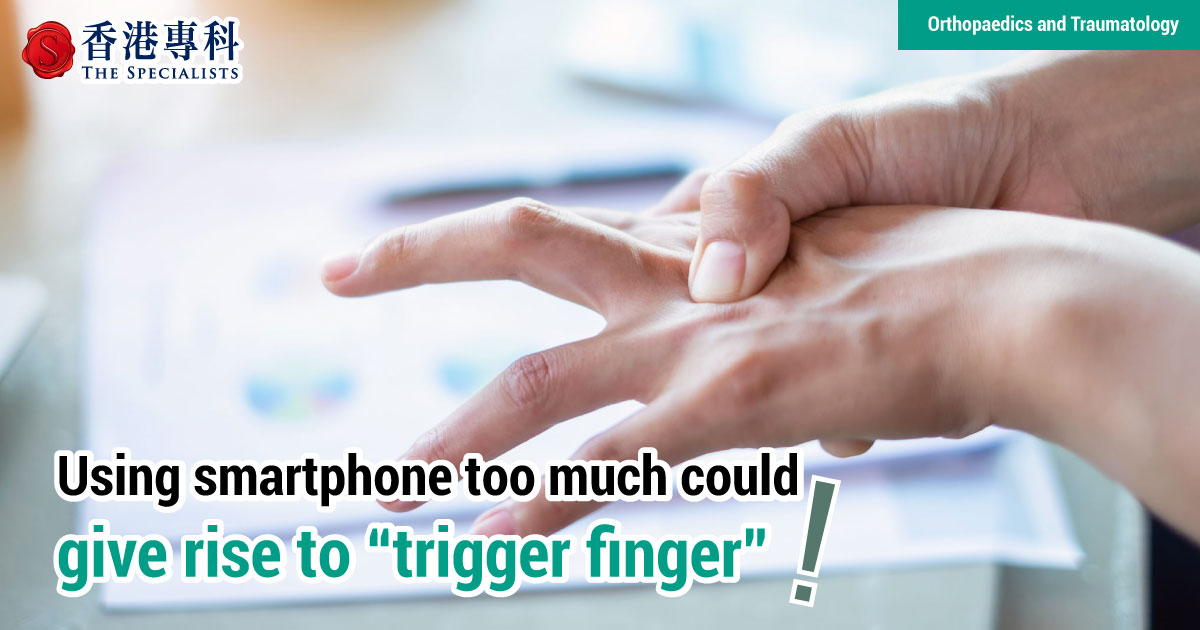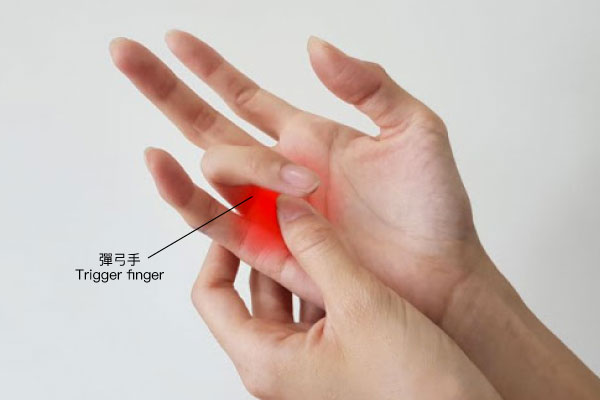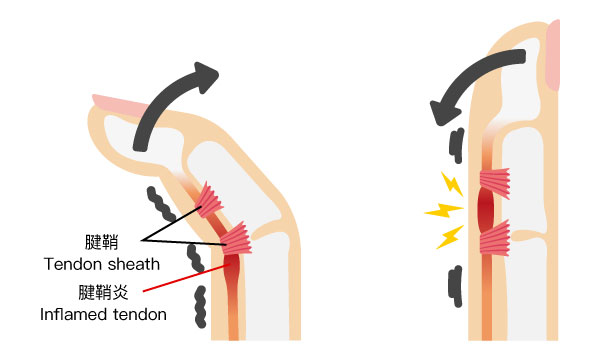Using smartphone too much could give rise to “trigger finger”

Trigger finger is also known as stenosing tenosynovitis and usually occurs when the patient repeatedly injures or overuses a tendon. The inflammation narrows the space within the sheath that surrounds the tendon in the affected finger. As a result, the patient would find it hard to bend or straighten the affected finger, and if they do, some painful clicks occur. Trigger finger can affect any finger, and may be more likely to develop in the thumb.

What causes trigger finger?
Local swelling from inflammation or scarring of the tendon sheath around the flexor tendons causes trigger finger. The disease can be brought on by excessive and repetitive use of the hands, including housework, computer use, musical instrument playing, and manual tasks. Generally, trigger finger is an acquired condition, but seldom appears to be related with congenital defects, metabolic problems, or rheumatoid arthritis.
Symptoms
Signs and symptoms of trigger finger may progress from mild to severe. Patients may experience finger stiffness and tenderness in the palm. The condition comes on suddenly after a particular activity, making it difficult to bend the affected finger. When the tendon is inflamed, the patient may feel numbness or pain in a finger joint, and may have difficulty in performing certain tasks, such as using chopsticks and typing.

Development of trigger finger
Trigger finger can be classified into 4 grades according to the severity level.
Grade I: Finger stiffness with the swelling of a tendon.
Grade II: Finger catching or locking in a bent position and you may have difficulty bending the finger.
Grade III: Finger needs to be straightened with the help of the other hand.
Grade IV: Finger locked in a bent position, which you are unable to straighten.
Don’t delay the medical care
The first sign of trigger finger is a feeling of stiffness, but the patient still can bend the finger. Later, as the symptoms increase, the finger may “get stuck” in a bent position and have to be straightened with the help of the other hand. It will, as a result, have negative impacts on the patient's quality of life.
Treatment
When experiencing the symptoms, the patient should avoid activities that require repetitive gripping and repeated grasping until symptoms improve. Besides, the patient may soak the hands in warm water to quiet the inflammation and increase the blood flow.
If the nonsurgical treatment did not work well, the surgery will be performed to release trigger finger. The surgeon will make incisions at base of involved finger in the palm to release flexor tendon from blocking tendon movement.
*The above information is for reference only, please consult your doctor for detail.
More : Trigger Finger Surgery

 3405 8288
3405 8288
